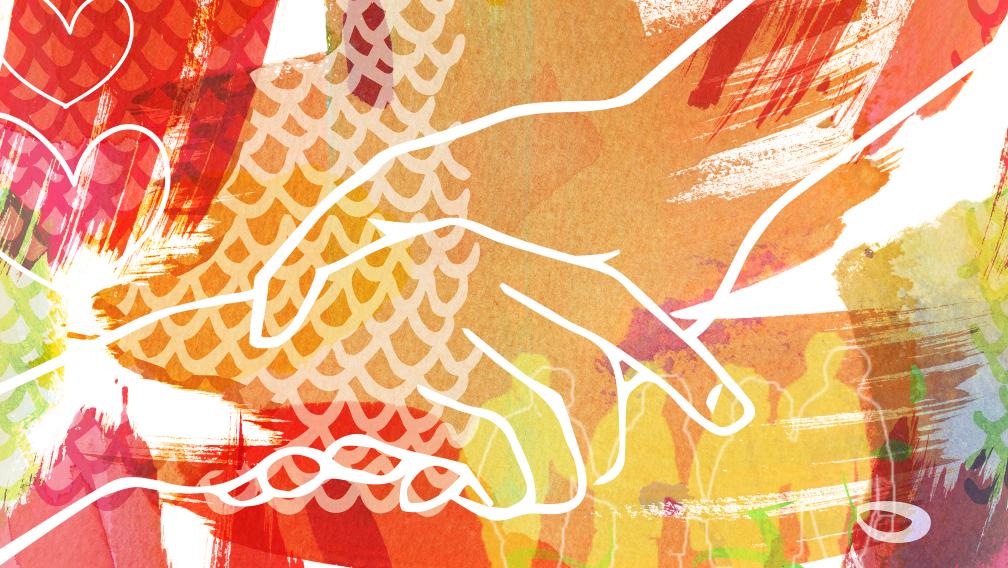What It Means to Follow Jesus

“Jesus said to [Bartimaeus], ‘Go; your faith has made you well.’ Immediately he regained his sight and followed him on the way.” — Mark 10:52
At this point in the Gospel of Mark, Jesus has told his disciples more than once about his coming suffering, that he must go to Jerusalem where he will be put to death — and raised on the third day. And for weeks, the disciples have failed to comprehend what Jesus is saying. They have different ideas in mind.
In private, the disciple Peter has declared he thinks Jesus is the Messiah, the one prophesized to liberate God’s people. But Peter thinks Jesus’s identity as Messiah is rooted in political and military power, an idea Jesus flatly rejects. Two other disciples, James and John, have argued about who will be greatest in the Kingdom of Heaven, focusing on their idea of earthly glory rather than the divine humility Jesus has been calling his followers to embrace.
And now we come to the story of Bartimaeus. It’s the last story of miraculous healing in the Gospel of Mark, and it occurs immediately before Jesus enters Jerusalem. Bartimaeus is a blind beggar sitting by the side of the road. He hears a large crowd passing by, and when he learns Jesus of Nazareth is among them, he calls out to him.
Bartimaeus addresses Jesus by two titles: Son of David and teacher. Son of David was reserved for the promised Messiah, whom the prophets foretold would be born of King David’s royal lineage. (This is why Peter was expecting a conquering king instead of a humble carpenter.) By publicly addressing Jesus as the Son of David, Bartimaeus implies that he recognizes him as the Messiah. It stops Jesus in his tracks.
As modern-day disciples, our role is to let go of our preconceived ideas about who Jesus is — and what liberation looks like — and instead follow him closely as our spiritual instructor.”
He calls Bartimaeus to him and asks, “What do you want me to do for you?” Bartimaeus then calls Jesus teacher — or spiritual instructor, in the original language — a title that stands in contrast to the idea of a mighty Messiah. It seems Bartimaeus not only recognizes that Jesus is the Messiah but, unlike Jesus’s disciples, he understands what that truly means. For Jesus, the liberation of God’s people is rooted not in violent power but in humility, service, and sacrifice — in love.
By calling Jesus both Messiah and teacher, Bartimaeus demonstrates an understanding of Jesus’s role and ministry the disciples seem to miss. Jesus praises him for his faith and offers him healing.
As modern-day disciples, our role is to let go of our preconceived ideas about who Jesus is — and what liberation looks like — and instead follow him closely as our spiritual instructor. We pattern our lives after Jesus’s teaching and example by putting others first, by caring for those who are outcast, and by positioning ourselves as children of God in need of God’s love and guidance.
This is precisely what Bartimaeus does: after being healed, he immediately follows Jesus on his way.
Read all of Sunday’s scriptures
Step Into the Story
Here are some ways to think about what it means to follow Jesus closely:
Spiritual Practice
“Discipleship [or following Jesus] is a state of being,” writes former Archbishop of Canterbury and theologian Rowan Williams. “Discipleship is about how we live; not just the decisions we make, not just the things we believe, but a state of being.”
Theology
In an excerpt from The Universal Christ, Father Richard Rohr speaks to the ongoing, again-and-again incarnation of God’s love in all creation — and how we often become fixated on the messenger instead of absorbing his message and following him: “Christ is the light that allows people to see things in their fullness. The precise and intended effect of such a light is to see Christ everywhere else.”
Work Life
“I’m Here” from The Color Purple musical is a heart-opening song about perceiving things as they truly are and seeing ourselves as God sees us — recognizing the divine love within each of us. This performance by Tony Award-winning performer Cynthia Erivo embodies the raw emotion behind the lyrics.
Visual Art
Baroque Italian painter Sebastiano Ricci depicts “Christ Healing the Blind Man.” The National Galleries of Scotland, where the work is on display, notes: “The painting's small size did not inhibit Ricci's grand design. His balanced, richly colored composition features monumental architecture and lively detail.”
Father Matt is Priest and Director, Youth and Community, at Trinity Church.





